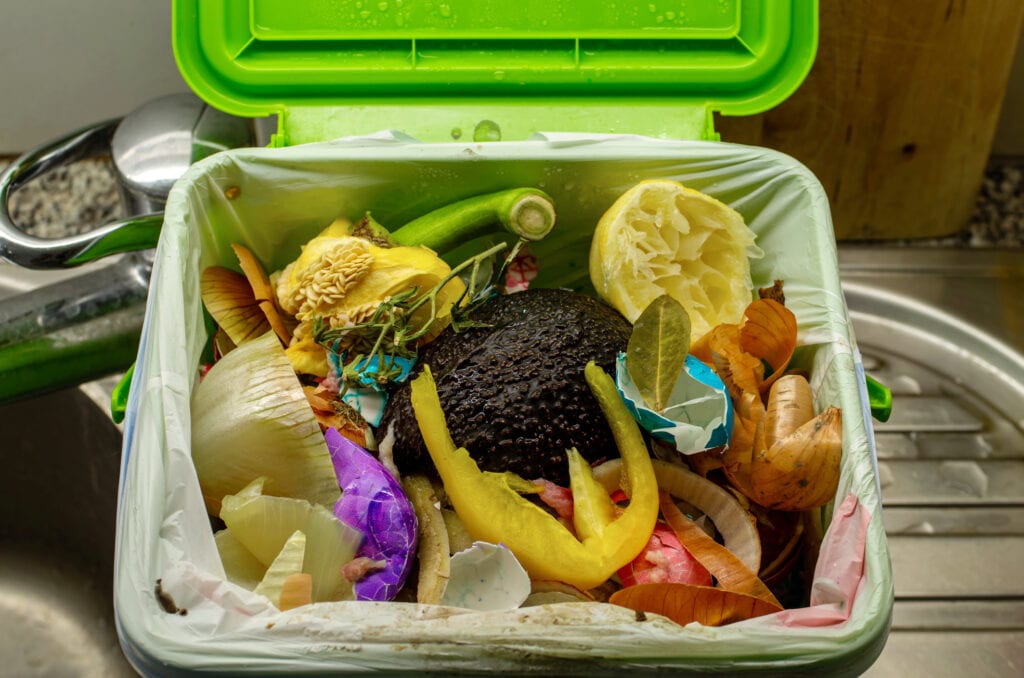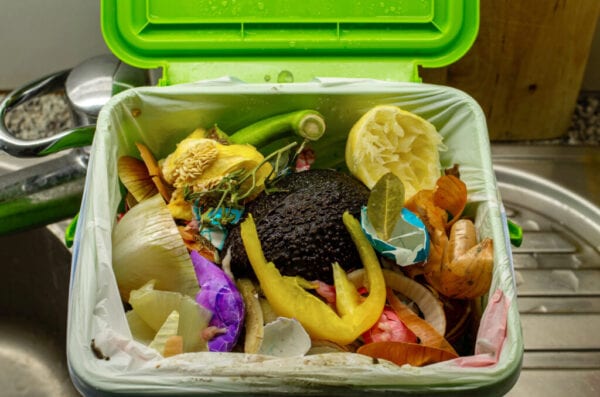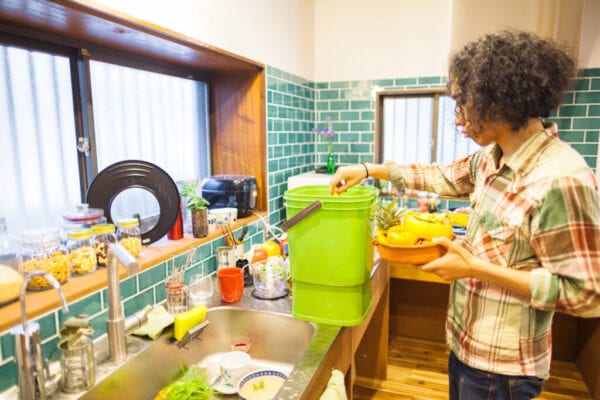How to Create an Indoor Compost Bin that Doesn’t Smell

We hope you like the products we recommend. Just so you are aware, Freshome may collect a share of sales from the links on this page. Finding fresh, enriched soil for your garden can get surprisingly pricey. A 12-quart bag of pre-made compost can run around $25. It’s simply $25 you don’t need to spend if you start composting. You can even do it right in the comfort of your own home by starting an indoor compost bin.Starting your own indoor compost bin ranks on the easier side of home projects. All you’ll need is a suitable compost bin and all those food scraps from the kitchen that would normally go to waste. Time and nature take care of the rest. You can learn how to make your own compost bin in several minutes or find an indoor compost bin to purchase online or in a store. Read on to learn how to start that compost bin inside. It’s a great way to make a more sustainable home.

Octavian Lazar / Getty Images
Indoor Compost Bin Materials
If you want an indoor compost bin, the first aspect of the bin you’ll need to understand is what to put in it, of course. Knowing how to keep a well-balanced compost bin will be your first line of defense in creating a bin that has little to no smell. Adding items to the compost bin that certainly shouldn’t be there, or adding the wrong balance of organic materials, will create an unpleasant odor that could make indoor composting impossible.Your compost bin needs five major components:
- Greens: This is a misleading label. It actually covers anything that is nitrogen-rich, not necessarily only green waste. That means you could use veggie leftovers, fruit waste like apple cores and banana peels, eggshells and even old bread. Anything is game, as long as it’s somehow plant-based. Animal products like meat and dairy should be kept out of the bin, as those will immediately lead to a smell.
- Browns: This label is a little more literal. It covers anything carbon-rich, like coffee grounds, tea leaves, dry grass/leaves and untreated paper (like coffee filters). A general rule is a 2:1 green to brown ratio, but ratio estimates vary dramatically. If your pile is slimy, add more browns. If your pile is dry and slow to compost, add more greens. After a while, you’ll learn the correct balance.
- Air: Your indoor compost bin should have some type of mechanism that allows for airflow, like holes or filters. That will allow aerobic breakdown of the scraps in a way that doesn’t lead to a foul odor. Estimates vary for when you should turn your compost pile, but a general estimate is that you should turn it once or twice per week for decent aeration.
- Water: The compost pile should be slightly damp, but not soaking, to the touch. Usually, kitchen scraps can keep this level of moisture, but you should check to make sure the compost pile isn’t drying out. Spray with water if the pile is dry.
- Soil: The soil has microorganisms that will help with the breakdown of waste. You’ll only need one scoop from the great outdoors.
From there, you’ll want to decide if you want your bin inside full-time or you want a bin that you can take out to a larger compost bin outside. If you have a lot of kitchen scraps, you might want a bin you can keep inside and carry to a larger compost bin out back when the inside container gets full. Otherwise, if you don’t like the idea of schlepping out back in the middle of winter, there are systems that allow for a full-time indoor compost bin.

recep – bg / Getty Images
Types of Bins
There are several different types of bins you can choose for your indoor compost bin:
- Basic countertop scrap bins: These are literally just tubs that sit on your countertop. They’re meant for filling with scraps in the kitchen and taking to a larger compost pile. Many come in distinct shapes and colors to work with any decorating style. Some also have bags inside to cut down on odor and mess.
- Under-counter bins: These attach to the inside of cabinet doors. They’re larger but are still typically meant for emptying into a main compost pile. They’re a convenient way to keep the composting bin out of the way.
- Bokashi system: This is a type of bin and microorganism mixture kit. It allows you to fill the bin with waste and then cover the waste with a mixture to neutralize the smell and ferment the material. It’s a system you can use as a full-time indoor compost bin.
- Aerobic bins: These bins have some sort of vent and filter system, usually with charcoal filters. These allow for the aerobic breakdown of waste, which can also cut the smell. These are also suitable for full-time indoor use.
- Worm bins: Some kits allow you to grow worms, which can aerate the material and keep it more nutrient dense. These systems are also odor-free, making them good for indoor use. Plus, it’s a good science project to do with kids.
And remember, your indoor compost bin should be able to fit your family and your environment. For instance, people in harsher climates may want a full-time indoor bin. Or families with a high volume of kitchen scraps could opt for a system of collecting scraps indoors and carrying them to a larger pile outdoors. The compost bin should work for your lifestyle first and foremost.



